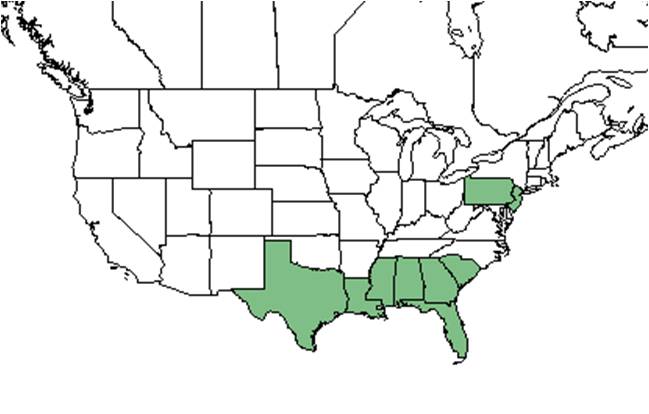Difference between revisions of "Sida acuta"
| Line 18: | Line 18: | ||
}} | }} | ||
| − | Common | + | Common names: Common wireweed, Broomweed |
==Taxonomic notes== | ==Taxonomic notes== | ||
Synonyms: ''Sida carpinifolia'' Linnaeus f.; ''S. ulmifolia'' P. Miller | Synonyms: ''Sida carpinifolia'' Linnaeus f.; ''S. ulmifolia'' P. Miller | ||
Revision as of 16:02, 26 September 2016
| Sida acuta | |
|---|---|

| |
| Photo by Shirley Denton (Copyrighted, use by photographer’s permission only), Nature Photography by Shirley Denton | |
| Scientific classification | |
| Kingdom: | Plantae |
| Division: | Magnoliophyta - Flowering plants |
| Class: | Magnoliopsida – Dicotyledons |
| Order: | Malvales |
| Family: | Malvaceae |
| Genus: | Sida |
| Species: | S. acuta |
| Binomial name | |
| Sida acuta Burm. f. | |

| |
| Natural range of Sida acuta from USDA NRCS Plants Database. | |
Common names: Common wireweed, Broomweed
Contents
Taxonomic notes
Synonyms: Sida carpinifolia Linnaeus f.; S. ulmifolia P. Miller
The specific epithet means sharpened to a point, in reference to the tip of the leaves.[1]
Description
Erect branched suffrutex up to 1 meter tall, rarely taller. Green stems, mostly hairless to stellate-hairy, particularly on younger parts. Leaves more or less narrowly lanceolate, 2-6(10) cm long; apex acute; base obtuse to rounded, hairless to sparsely stellate-hairy; margin regularly serrate; petiole c. 2.5 mm, pubescent. Stipules linear, usually longer than the petiole. Flowers axillary, solitary or 2 together. Calyx 6-8 mm long, somewhat angular, saucer-shaped, hairless, lobed to the middle; petals as long as calyx, yellow. Mericarps 5-6, c. 4 mm long, birostrate, grooved between the awns.[2]
Distribution
Distributed from South Carolina throughout Florida and west to Mississippi.[1]
Ecology
Habitat
Occurs in dry and moist deciduous forests.[1] In Northern Australia, it is classified as an invasive species and dominates improved pastures, disturbed areas and roadsides.[3]
Phenology
Flowers are borne singly or in small clusters in the leaf forks on short stalks. Flowers have 5 yellow petals and 5 sepals.[4]
Seed dispersal
Seeds have two sharp awns that easily attach to animals and clothing.[5]
Seed bank and germination
Seeds have an innate dormancy period, the embryo requiring a post-ripening period of 1 to 3 months at high temperatures before germinating.[5]
Pollination
The following Hymenoptera families and species were observed visiting flowers of Sida acuta at Archbold Biological Station: [6]
Halictidae: Augochlorella gratiosa
Conservation and management
In Northern Australia, it is considered an invasive species. It dominateds improved pastures, disturbed areas, and contaminates agricultural produce.[4]
Cultivation and restoration
Photo Gallery
References and notes
- ↑ 1.0 1.1 1.2 [[1]]Eat the Weeds. Accessed: March 14, 2016
- ↑ [[2]]Encyclopedia of Life. Accessed: March 15, 2016
- ↑ Flanagan, G. J., L. A. Hills, et al. (2000). "The successful bioloical control of spinyhead Sida, Sida acuta [Malvaceae], by Calligrapha pantherina in Australia's Northern Territory." Proceedings of the X International Symposium on Biological Control of Weeds
- ↑ 4.0 4.1 [[3]]Accessed: March 15, 2016
- ↑ 5.0 5.1 Lonsdale, W. M., G. Farrell, et al. (1995). "Biological Control of a Tropical Weed: A Population Model and Experiment for Sida acuta." Journal of Applied Ecology 32(2): 391-399.
- ↑ Deyrup, M.A. and N.D. 2015. Database of observations of Hymenoptera visitations to flowers of plants on Archbold Biological Station, Florida, USA.